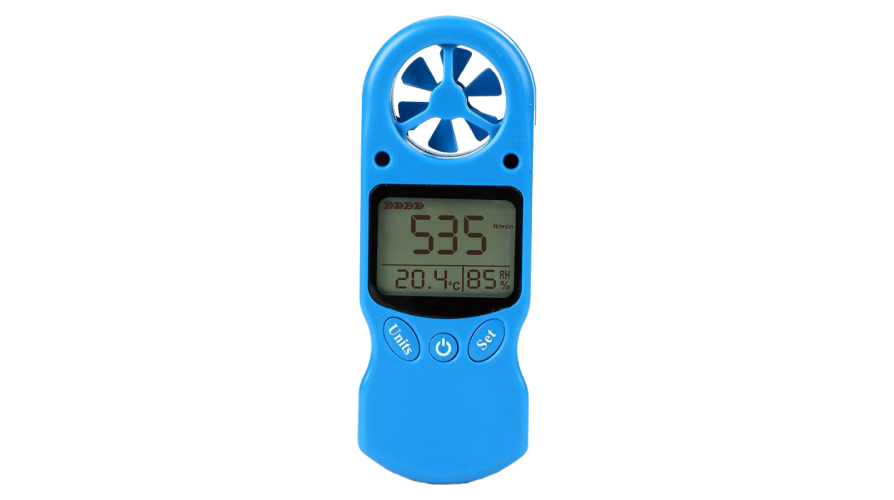Anemometers Unveiled: Comprehending Their Significance in Ecological Tracking and Precaution
The function of anemometers in ecological monitoring and safety and security actions is commonly underestimated, yet their relevance is obvious. These tools have a lengthy history rooted in scientific questions and technical developments, evolving to come to be vital tools in numerous areas. From meteorology to aeronautics safety and security, anemometers play a critical duty in giving accurate information that informs decision-making processes and boosts general safety and security. Understanding the intricacies of anemometers unveils a world of important insights that are basic to our understanding of the environment and the procedures we take to ensure security.
Background of Anemometers
The development of anemometers can be traced back to the ancient human beings where fundamental wind determining devices were very first utilized. These early wind measurement devices laid the foundation for the advancement of extra sophisticated anemometers with time. Among the earliest recognized anemometers was the hemispherical cup anemometer developed by Leon Battista Alberti in the 15th century. This design included four hemispherical mugs that gathered wind power, offering a dimension of its intensity based on the rate of turning.
Over the years, advancements in technology led to the growth of more modern-day anemometers, including ultrasonic anemometers and laser Doppler anemometers, offering increased accuracy and performance in gauging wind rate and direction. The background of anemometers showcases an exceptional trip of development and progress in the area of meteorology.
Sorts Of Anemometers
Throughout the field of meteorology, various sorts of anemometers have actually been created to properly measure wind speed and instructions. The most usual kind is the mug anemometer, which contains three or 4 cups installed on horizontal arms that turn with the wind. As the cups rotate, the rate at which they revolve is directly proportional to the wind rate. An additional extensively made use of kind is the vane anemometer, which features a tail or fin that aligns itself with the wind direction. This placement permits the gadget to identify the wind instructions. Sonic anemometers make use of ultrasonic signals to measure wind speed and instructions properly. They are commonly used in study applications because of their high accuracy. Hot-wire anemometers run based upon the concept that the cooling result of wind on a warmed cable is proportional to the wind rate. These anemometers appropriate for determining reduced wind speeds with high precision. Each kind of anemometer has its strengths and is picked based on the specific needs of the surveillance task at hand.
Applications in Weather Forecasting
Having talked about the numerous kinds of anemometers made use of in weather forecasting for determining wind rate and instructions, it is necessary to discover their sensible applications in the area. Anemometers play an important role in meteorology by providing precise and real-time data on wind conditions (anemometer). Meteorologists use anemometers to check wind speed and direction to forecast weather patterns, issue warnings for extreme weather events like storms, twisters, and tornados, and examine weather for air travel safety
In weather forecasting, anemometers aid in recognizing local read and regional wind patterns, which are vital for forecasting weather adjustments and identifying weather patterns. These devices are also utilized in research study to examine microclimates, urban heat islands, and air pollution dispersion. Additionally, anemometers are employed in agriculture to maximize crop management methods, such as irrigation and pesticide application, based on wind conditions.
Significance in Aviation Safety And Security
An integral element of ensuring aeronautics security hinges on the precise monitoring of wind conditions utilizing anemometers. Anemometers play an essential role in air travel by offering real-time data on wind speed and direction, aiding pilots in making informed choices throughout touchdown, flight, and take-off. Strong and uncertain winds can considerably impact aircraft procedures, making it essential for aeronautics authorities to count on exact wind dimensions to make sure the safety of travelers and staff.

In the dynamic atmosphere of aviation, where also small modifications in wind speed and direction can have profound effects, anemometers stand as important devices for advertising safe and risk-free flight.
Function in Environmental Study
Anemometers play a crucial function in environmental research by providing crucial data on wind speed and instructions. By precisely gauging wind qualities, anemometers help scientists analyze the motion of pollutants in the air, analyze the effect of industrial emissions, and anticipate the spread of contaminants in the setting.


Verdict
In final thought, anemometers have actually played a vital function in environmental tracking and safety actions. Comprehending the significance of anemometers is crucial for precisely measuring wind rate and instructions, which is crucial for predicting climate patterns, guaranteeing secure air travel procedures, and conducting ecological studies.
One of the earliest well-known anemometers was the hemispherical mug anemometer invented by Leon Battista Alberti in the 15th century. Over the years, innovations in technology led to the advancement of more modern anemometers, including ultrasonic anemometers and laser Doppler anemometers, supplying increased precision and effectiveness in measuring wind rate and direction. Hot-wire anemometers operate based on the concept that the cooling impact of wind on a warmed cord is proportional to the wind rate. Meteorologists utilize anemometers to keep track of wind speed and instructions to forecast climate patterns, concern warnings for extreme weather condition occasions like cyclones, twisters, and storms, and evaluate atmospheric conditions for air travel safety and security.
Understanding the significance of anemometers is crucial for properly measuring wind speed and direction, which is vital for predicting weather condition patterns, making certain secure aeronautics More Help procedures, and performing ecological researches. (anemometer)